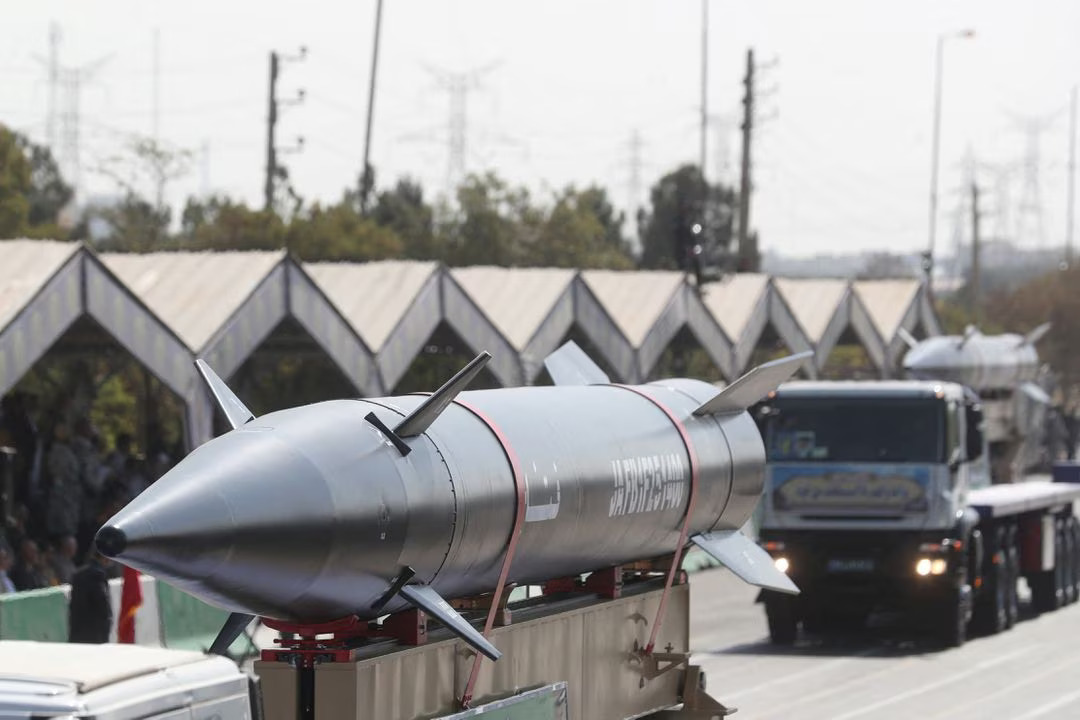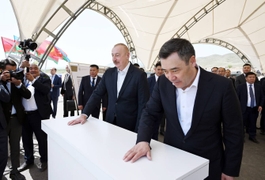The spokesperson of Iran's Defense Ministry has affirmed that the nation possesses a variety of missiles with the capability to target Israel.
"Today, we have missiles at our disposal, which we have named Israeli-hitter missiles, and their first target point is the occupied territories," Brigadier General Reza Talainik said.
Talainik delivered these comments during a commemorative event honoring the soldiers who lost their lives in the Iran-Iraq War from 1980 to 1988, as reported by ISNA news agency on September 24.
He further said that the reason for the missiles was that Iran's weapons systems "must be proportional to the threats we face," and added that the Haj Qasem missile on display was also an “Israel-hitter.” Talainik underlined that his country is now the region's top military power, and "no equation in the Middle East can be adjusted without the role of Islamic Iran.”
In August 2020, Iran introduced a domestically-produced surface-to-surface missile named Shahid Haj Qasem, dedicated to the memory of the late IRGC Quds Force commander, Qasem Soleimani. This missile boasts a range of 1,400 km and is reputedly designed to be "undetectable" by radar systems.
Each year, during the annual parade that marks the commencement of Sacred Defense Week, Iran typically showcases its latest military offerings, encompassing a range of missiles and drones. This event serves as a commemoration of the beginning of the Iran-Iraq war.
During a military parade in Tehran on September 22, Iran exhibited two advanced long-range solid-fuel weapons: "Paveh" and "Fattah." "Paveh" is a newly-developed long-range cruise missile capable of traveling up to 1,650 km (1,025 miles), while "Fattah" is a precision-guided two-stage solid-fueled rocket with a range of 1,400 km (870 miles) and a terminal speed ranging from Mach 13 to 15. Its remarkable speed, combined with maneuverable nozzles enabling the missile to navigate freely within and beyond Earth's atmosphere, renders it impervious to interception by any currently deployed anti-missile systems.
Furthermore, the parade featured the debut of "the world's longest-range drone," alongside the presentation of Mohajer, Shahed, and Arash unmanned aerial vehicles.
Last month, Iran unveiled its advanced drone called the Mohajer-10, featuring extended flight range, longer endurance, and a larger payload capacity. This drone boasts an operational range of 2,000 km (1,240 miles) and can stay airborne for up to 24 hours. Iranian media reports indicated that its payload capacity has been increased to 300 kg (661 pounds), which is double the capacity of the Mohajer-6 drone.
In recent years, Iranian military experts and technicians have made significant strides in domestically producing a wide array of equipment, achieving self-sufficiency in the realm of weaponry. Iranian officials have consistently emphasized their commitment to enhancing military capabilities, including missile and drone technology, despite Western sanctions and opposition from Israel.
Since the 1979 Islamic Revolution, Iran and Israel have been entangled in a proxy conflict. Tehran reportedly provides military and financial support to Lebanon's political-military group Hezbollah, as well as Palestinian organizations like Hamas and Islamic Jihad, which have engaged in conflicts with Israel.







 President Ilham Aliyev shed light on the evolving contours of the peace process with Armenia during an international conference in Baku this week. ...
President Ilham Aliyev shed light on the evolving contours of the peace process with Armenia during an international conference in Baku this week. ...
 Azerbaijan and Armenia started the process of demarcation of their border on Tuesday, with the installation of the first border markers based on ge...
Azerbaijan and Armenia started the process of demarcation of their border on Tuesday, with the installation of the first border markers based on ge...
 Iranian President Ebrahim Raisi expressed Tehran’s readiness to participate in significant development projects in Sri Lanka during the inauguratio...
Iranian President Ebrahim Raisi expressed Tehran’s readiness to participate in significant development projects in Sri Lanka during the inauguratio...
 As the conflict between Ukraine and Russia escalates, the strategic importance of Kharkiv, Ukraine's second-largest city, has come sharply into focus.
As the conflict between Ukraine and Russia escalates, the strategic importance of Kharkiv, Ukraine's second-largest city, has come sharply into focus.
 Iran and Pakistan have signed eight cooperation documents in various fields, and agreed to strengthen ties to fight terrorism in the region.
Iran and Pakistan have signed eight cooperation documents in various fields, and agreed to strengthen ties to fight terrorism in the region.



